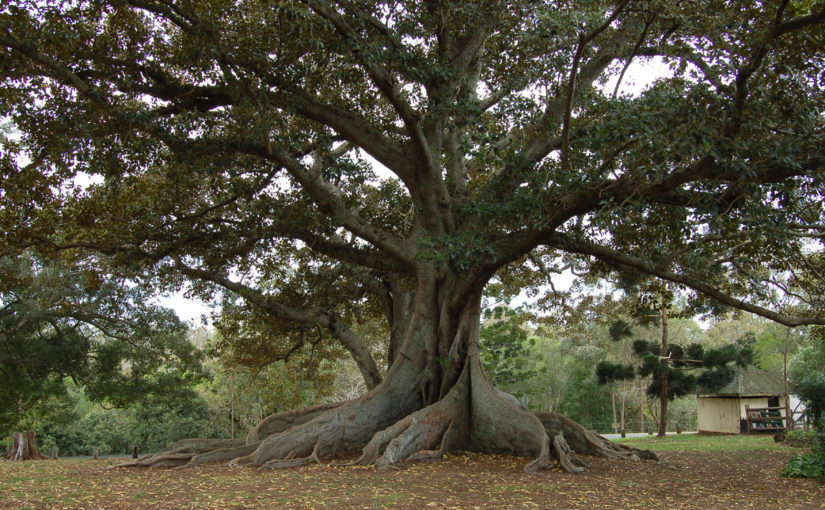Jesus Curses the Fig Tree
12 On the following day, when they came from Bethany, he was hungry. 13 And seeing in the distance a fig tree in leaf, he went to see if he could find anything on it. When he came to it, he found nothing but leaves, for it was not the season for figs. 14 And he said to it, “May no one ever eat fruit from you again.” And his disciples heard it.
The Lesson from the Withered Fig Tree
20 As they passed by in the morning, they saw the fig tree withered away to its roots. 21 And Peter remembered and said to him, “Rabbi, look! The fig tree that you cursed has withered.”22 And Jesus answered them, “Have faith in God. 23 Truly, I say to you, whoever says to this mountain, ‘Be taken up and thrown into the sea,’ and does not doubt in his heart, but believes that what he says will come to pass, it will be done for him. 24 Therefore I tell you, whatever you ask in prayer, believe that you have received[c] it, and it will be yours. 25 And whenever you stand praying, forgive, if you have anything against anyone, so that your Father also who is in heaven may forgive you your trespasses.”[d]
Today’s reading is one of those lessons I now know more about than I did before we started the Bible Journal. Yes, I heard this lesson of the Fig Tree back in Sunday School but I didn’t truly understand the meaning. Over the course of the last two years, I have written on the Fig Tree twice. It is one of my favorite posts for two reasons: 1) I learned to unpack Jesus’ stories and parables and 2) it shows Jesus as human. So much symbolism is shown in today’s reading. If we look at the full context of Mark 11 and into the readings of the coming week, Jesus has much on his mind. His “triumphant entry” is made is the city on a donkey. He cleanses the temple. He is challenged as unbelievers are surfacing. He knows his death awaits him. As we put the Fig Tree parable into context, I did go back to my first post on this topic and pull a few fig facts and key message points.
Did you know?:
- Fig fruit is one of the popular fruits enjoyed since ancient times.
- The fig tree is native to temperate regions of Asia Minor or Turkey, and today, grown as an important fruit of commerce in the eastern Mediterranean climates, USA, and Spain
- Fig fruit is low in calories. 100 g fresh fruits carry only 74 calories. However, they contain health benefiting soluble dietary fiber, minerals, vitamins, and pigment antioxidants that contribute immensely towards optimum health and wellness.
- Dried figs are an excellent source of minerals, vitamins and antioxidants. In fact, dried figs possess higher concentrations of energy, minerals, and vitamins. 100 g dried figs provide 249 calories.
- Furthermore, research studies suggest that chlorogenic acid in the figs help lower blood sugar levels and control blood glucose levels in type-II diabetes mellitus (adult-onset) condition.
http://www.nutrition-and-you.com/fig-fruit.html if you want to learn more.
In Mark 11: 12-14, and also in Matthew 21: 18-22 Jesus sees the fig tree up ahead and was looking forward to tasting that sweet treat. He saw the leaves and assumes it will be bearing fruit, but once he arrived, he is disappointed. The tree was barren. Even though it was out of season, he was mad. He cursed the tree, which could be viewed by some as a show of his power. Typically he used his power to perform miracles, but this time, his power has the opposite result of harming a living thing. It was the only time he cursed something and it withered immediately.
We see Jesus use parables, miracles and teachings to make his disciples and followers think. We have to unpack his messages as they often have double meanings or can be interpreted differently. In this story, the fig tree has leaves, which outwardly shows growth, hopefully signifying fruit. We can liken this vision to people. People in Jesus’s time and also today, outwardly appearing to follow God, saying the right thing, going to church, but inside, the opposite is happening. They do not believe. They may say they are Christians but deep down don’t live up to God’s word. Or what about the opposite: they have faith but don’t follow through. “Faith without good works is dead”.
Going back to the story of the Fig Tree, if I had been following Jesus and saw the Fig Tree wither, I would have shook with fear. Would Jesus now start performing this type of act or even take this type of approach with non-believers? What does he mean by this act?
What do you take away from this story? What would he want us to do? Believe, have faith, follow, perform good works, follow the commandments. To me, it is about being a Christian through and through. Not faking it for appearance sake, but living the life day in and day out as a follower of Christ. God does not want us to fake it, and he also does not want us to wither away. He will protect us.
